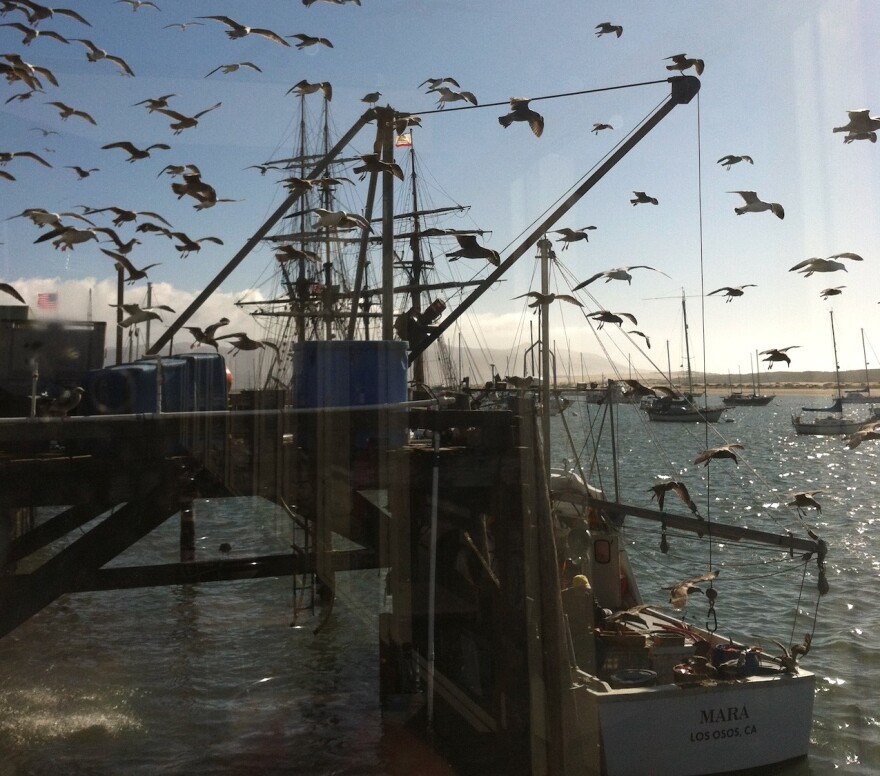There are two major threats to the health of wild and domestic birds right now, between avian influenza and a mysterious illness affecting brown pelicans.
Avian influenza, or “bird flu” has been sickening poultry in California for the last few months. As of this month, more than 45 million backyard and commercial birds and several thousands of wild birds across the United States have been infected, according to the CDC.
Christine Johnson, the Executive Director for the Pacific Wildlife Care in Morro Bay, has seen countless affected birds within the rehabilitation facility.
“The animals don't have that much time from infection until they pass away from the virus. So it is fast-moving,” she said.
According to the CDC, the Avian Influenza A viruses have two categories– Low Pathogenic and High Pathogenic.
The Low Pathogenic strain may have little to no signs of infection. But the High Pathogenic strain causes severe symptoms. There’s no cure for either one right now.
Johnson said that symptoms include neurological problems, lethargy, and sudden death. She noted that the average person would most likely not recognize that affected birds may be suffering. By the time the birds test positive, it’s often too late.

“The birds who have been diagnosed with avian influenza in California have been found already deceased,” she said.
Bird flu is not the only threat to birds right now. Since late May, large numbers of sickly, emaciated brown pelicans have shown up at wildlife rehabilitation centers along California’s Central and Southern Coasts.
According to the California Department of Fish and Wildlife, pelicans mostly consume anchovies. However, anchovies are abundant along the coast right now. Communication spokesperson for the International Bird Rescue, Russ Curtis, said the cause of mass starvation is unclear.
“They weren't getting the nutrients that they needed. And so to us, it's still a mystery. There's certainly lots of conjecture,” said Curtis.
While agencies like the California Department of Fish and Wildlife continue to investigate the cause, organizations like the International Bird Rescue focus on treating and returning pelicans back into the wild.
As for the rehabilitation process, Curtis said, “They're evaluated and as soon as we can get them into a place where they can be fed and given nutrients, then they move from inside the facility to outside where we have a couple of different aviaries to get them back on the road to recovery.”
In desperation, pelicans are looking for food in all of the wrong places, such as fishing boats, piers, even exploring outside of the coast, said Curtis.
“When you're hungry, you don't always make the best decisions and I think pelicans really showed us that they really needed some nutrients,” said Curtis.
As a result, countless pelicans end up stranded or show up with fishing line-related injuries.
According to Curtis, “Within a couple of weeks we can get them back on, but a number of our birds will be in care for four to six weeks.”

With so many birds dying from this mysterious illness and the avian flu, Johnson believes that education and disease-spread prevention are especially important now more than ever.
She said, “We can't afford to lose any more wild animals than we can, right? Because of the way that we've made it difficult for them to thrive in the environment that's here for them now”
To prevent the spread of the avian influenza, Johnson encourages people to put away their bird feeders, bird fountains, and other areas where birds may congregate.
It is highly unlikely for humans to be infected by the Avian Flu, with only one report in the United States since April 28th, according to the CDC. Johnson offers advice to safely handle infected birds.
She advised, “We are still encouraging anyone who finds an animal that they may be concerned about to use gloves when handling the animal and put a mask on.”
While agencies investigate these problems, organizations like the International Bird Rescue and the Pacific Wildlife Care in Morro Bay say they’ll continue to care for — and release — every bird they can.
If you find any sick-looking birds, reach out to the Pacific Wildlife Care Hotline at 805-543-9453 or visit the International Bird Rescue website.



